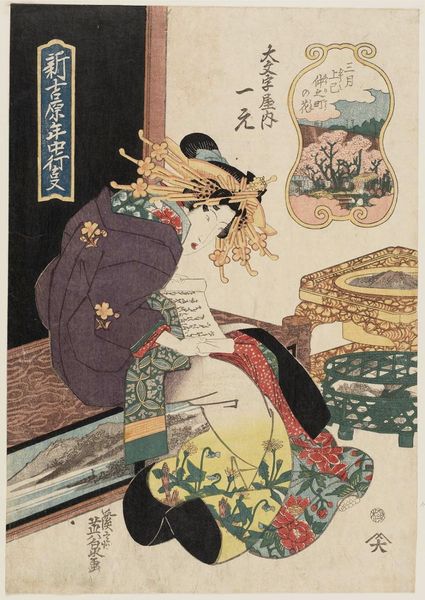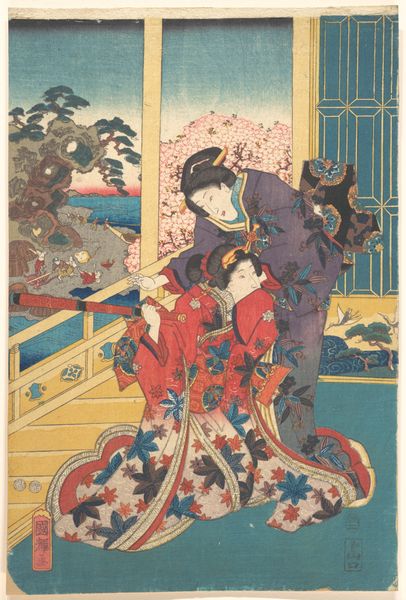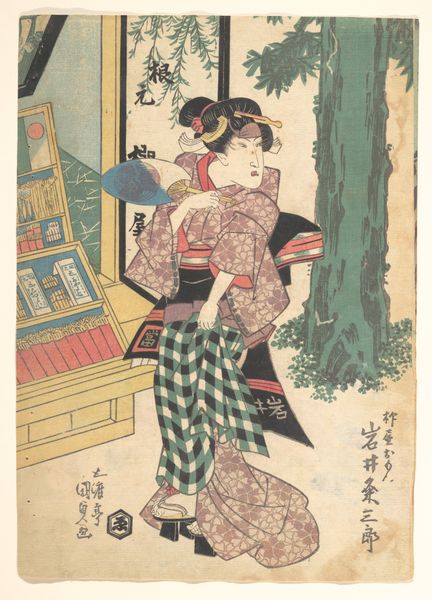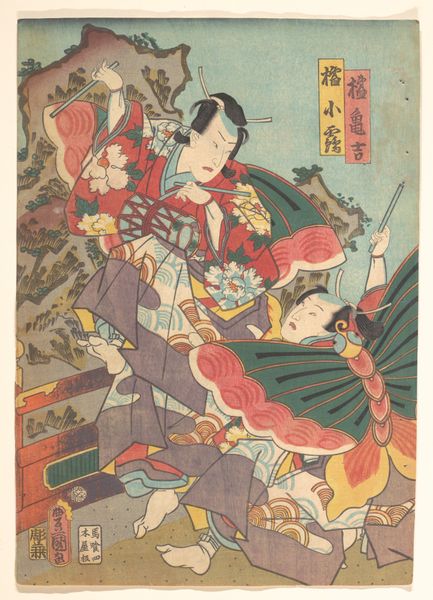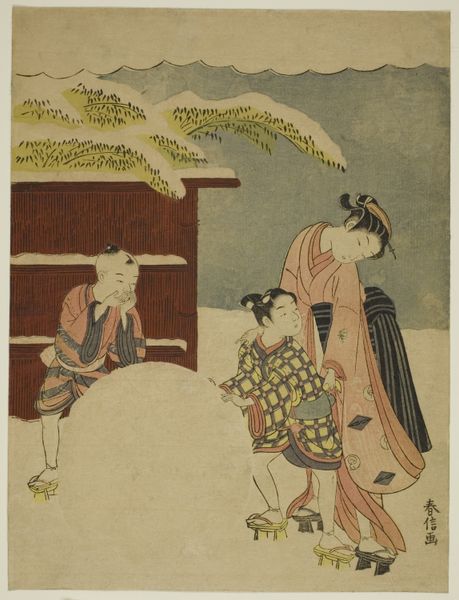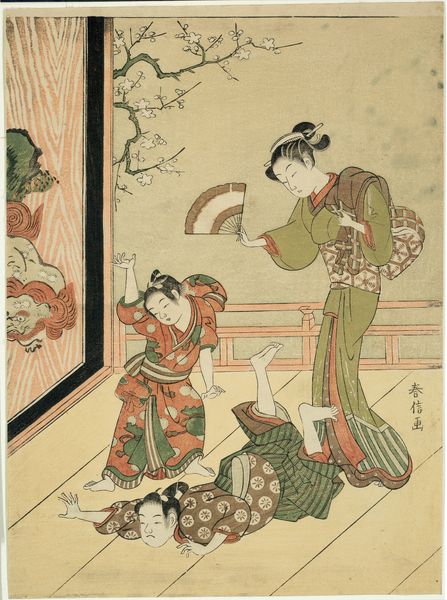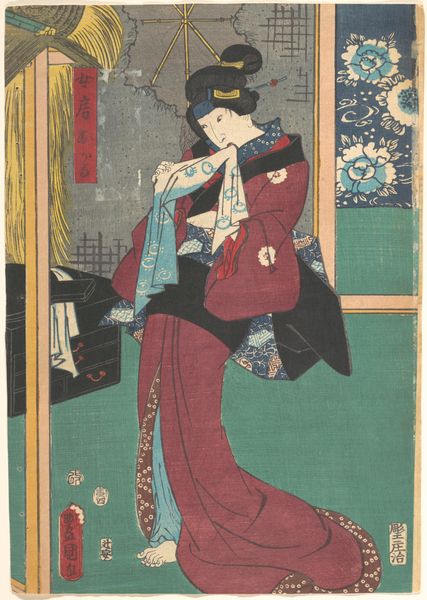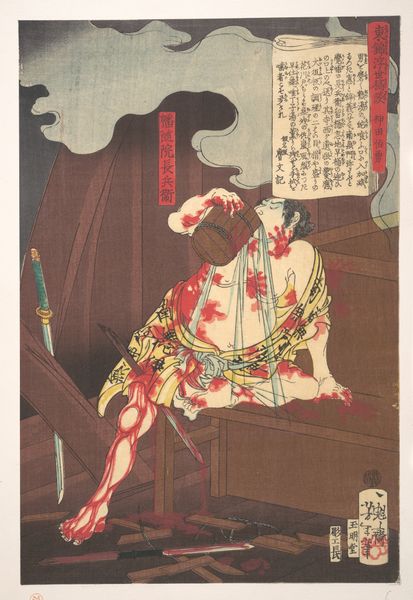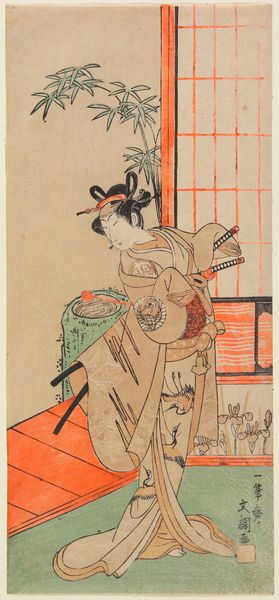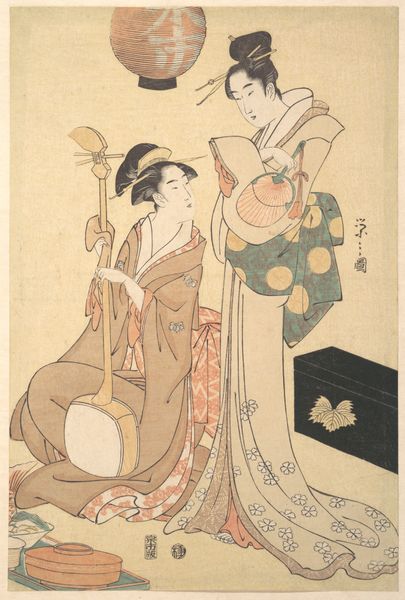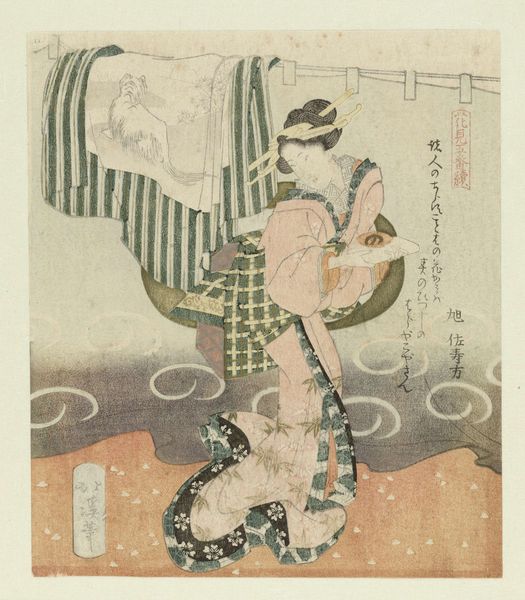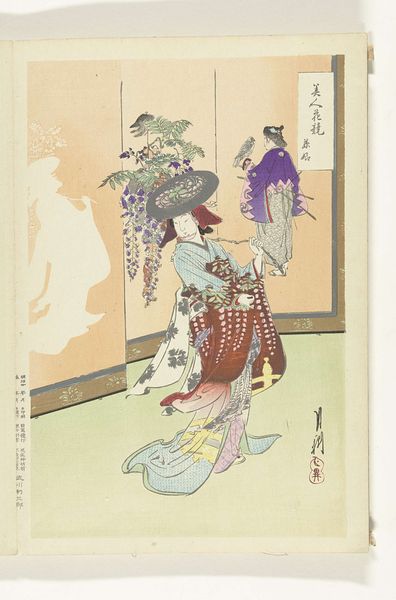
Twelve Hours of Spring Pleasures: Hour of the Goat 1800 - 1865
0:00
0:00
print, woodblock-print
# print
#
asian-art
#
ukiyo-e
#
figuration
#
woodblock-print
#
genre-painting
Dimensions: Image: 14 1/8 x 9 1/2 in. (35.9 x 24.1 cm)
Copyright: Public Domain
Editor: We are looking at "Twelve Hours of Spring Pleasures: Hour of the Goat", a woodblock print made between 1800 and 1865 by Utagawa Kunisada. I’m struck by the composition—there are multiple scenes within the scene. How do you interpret this layering? Curator: The framing device employed here segments the pictorial space into distinct yet related narrative threads. Consider the chromatic scale; how does the artist draw the eye across the composition utilizing analogous color schemes? Editor: I see that now; the reds and greens definitely link the disparate elements. So, it’s the artist using color to guide us, not necessarily symbolism or narrative? Curator: Precisely. Furthermore, examine the geometric structures, such as the clock, how it functions less as temporal indicator and more as vertical anchor. The very medium, ukiyo-e, speaks to structure—layered impressions achieving formal unity. Editor: That’s fascinating. So, you are saying it's less about the specific story and more about the artistic decisions? Like, the structure holds the meaning. Curator: Indeed. The very arrangement communicates as much as the subject represented, a rigorous orchestration of visual syntax. Observe the tension between the flatness endemic to woodblock printing, and the illusion of depth generated through careful delineation. What do you make of the contrast? Editor: It's almost as if the lack of perspective flattens the hierarchy. Like everything—people, the clock, the scenes—exist on the same plane, equal in importance. I had never thought about the artistic intent of flatness like that. Thanks! Curator: A valuable insight, highlighting how formal constraints catalyze meaning-making. Thank you.
Comments
No comments
Be the first to comment and join the conversation on the ultimate creative platform.
